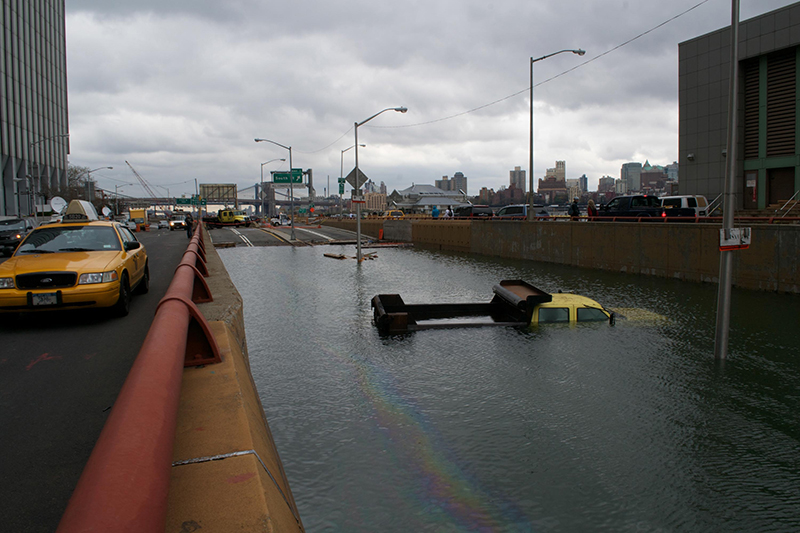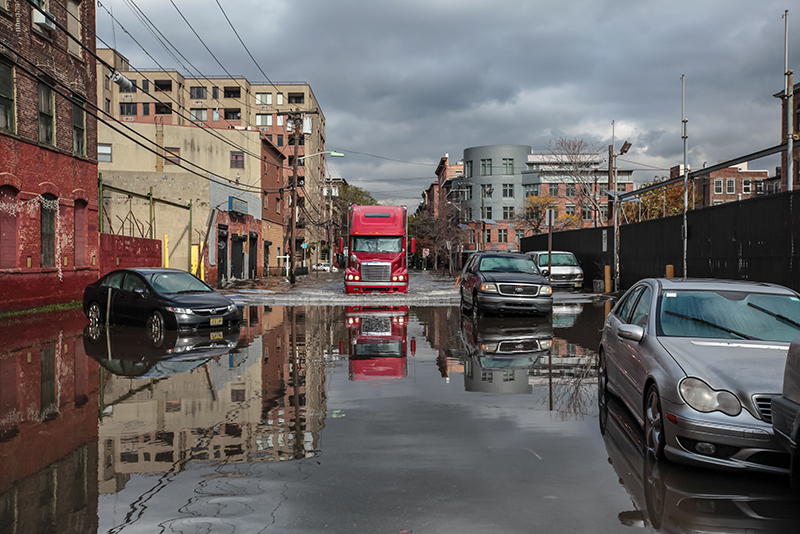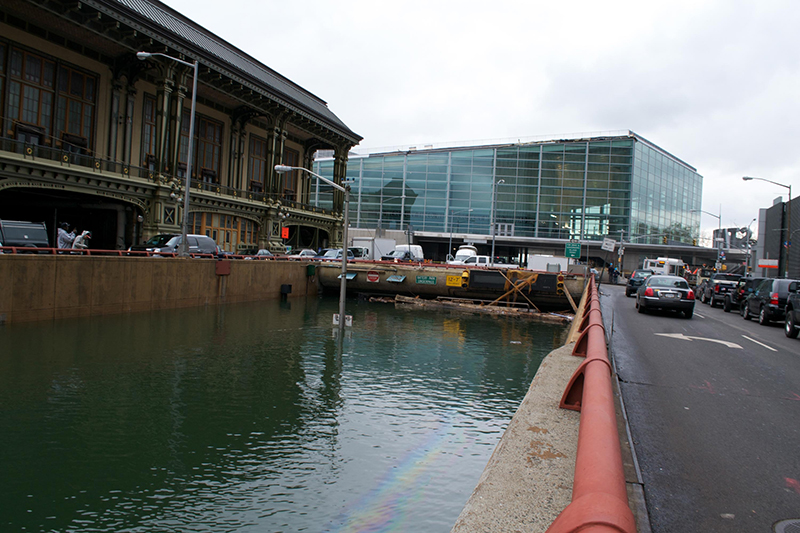Heavy rainfall is causing significant flooding in New York City [1], impacting areas across New York, New Jersey, Pennsylvania, and Connecticut. Flash flood warnings are currently in effect for Manhattan, Brooklyn, Queens, the Bronx, Staten Island, and Long Island.
The increasing frequency of extreme weather events has put residents at risk, making it crucial for individuals and businesses to understand the safety measures and legal implications associated with flooding.
Before delving into the legal aspects, let’s examine some sobering statistics.
According to the Department of Environmental Conservation, the sea levels around New York City have risen by over a foot since 1900 [2]. Additionally, the frequency and intensity of storms have increased, with Hurricane Sandy in 2012 serving as a stark reminder of the city’s vulnerability to coastal flooding.
Risks of Electrocution During Flooding
One of the lesser-known but significant risks during flooding is electrocution. Floodwaters can compromise electrical systems, leading to exposed wires and the potential for electric shock.
Electrocution is a leading cause of death during floods, although the odds of dying due to electrocution are 1 in 13,176 [3]. Individuals must exercise extreme caution and avoid contact with electrical equipment and outlets in flooded areas.
For example, If your breaker box is only accessible when standing in flood waters, then don’t shut it off by yourself.

FAQ about Flooding and Precautions
Precautions to Take While Driving:
Remember that personal safety should always be the top priority, and it’s better to delay travel plans than to put yourself in a potentially life-threatening situation.

Injury Facts During Flooding
In the chaos of flooding, injuries can occur. According to the Centers for Disease Control and Prevention (CDC) [5], common injuries during floods include:
Electrocution Safety Risk in New York City Flooding: Who is to Blame?
While flooding is considered an act of God, making it difficult to collect damages, there are instances in which you can bring a Tort Claim.
It is best to consult with an experienced New York City personal injury attorney before deciding that you have no lawsuit.

Tort Claims in New York City
In the fiscal year (FY) 2022, there was a notable shift in city payouts for personal injury and property damage claims, known as Tort Claims. This marks the first rise since fiscal year 2008 and covers incidents like slip-and-falls, medical malpractice, accidents, police-related issues, and property damage.
There was a 28 percent uptick in filed tort claims and a 20 percent increase in the amount paid out for settlements and judgments. New York taxpayers are still dealing with claims that go back more than ten years. [6]
In FY 2022, the city paid $688.4 million for tort claims, surpassing the previous year’s $583 million by $105.5 million. Notably, $82.5 million was allocated for settling personal injury claims filed before FY 2013, often termed “legacy claims.” Excluding these legacy claims, the payouts for personal injury claims rose from $520.2 million in FY 2021 to $598.5 million in FY 2022. [6]
In the face of increasing flood risks, understanding the legal implications, precautions, and safety measures is critical for residents and businesses to be proactive in safeguarding themselves and their assets. A comprehensive approach is key to navigating the challenges posed by flooding in New York City.
Sources:
[1] Shapiro, E., Golembo, M., & Griffin, M. (2023, September 30). New York City faces major flooding as heavy rain inundates region. ABC News. https://abcnews.go.com/US/new-york-city-braces-major-flooding-heavy-rain/story?id=103593175
[2] Climate Change Effects and Impacts – NYS Dept. of Environmental Conservation. (n.d.). https://www.dec.ny.gov/energy/94702.html
[3] Odds of Dying – Injury Facts. (2023, March 1). Injury Facts. https://injuryfacts.nsc.org/all-injuries/preventable-death-overview/odds-of-dying/
[4] Turn Around Don’t Drown®. (n.d.). https://www.weather.gov/safety/flood-turn-around-dont-drown
[5] CDC Works 24/7. (2023, September 29). Centers for Disease Control and Prevention. https://www.cdc.gov/
[6] Annual Claims Report Fiscal Year 2022. (2023, April 14). comptroller.nyc.gov. Retrieved September 30, 2023, from https://comptroller.nyc.gov/reports/annual-claims-report/

